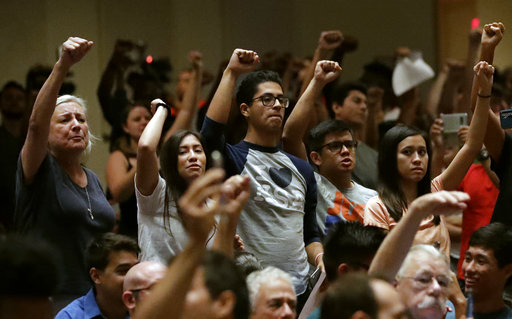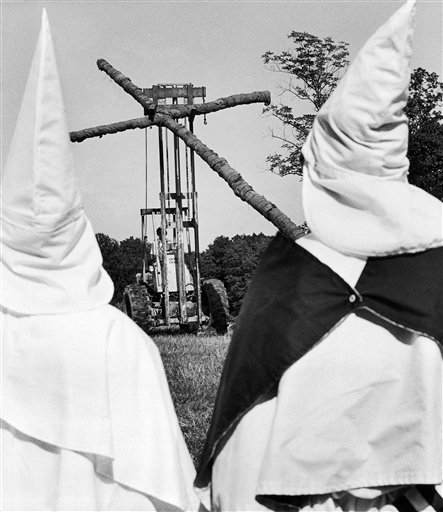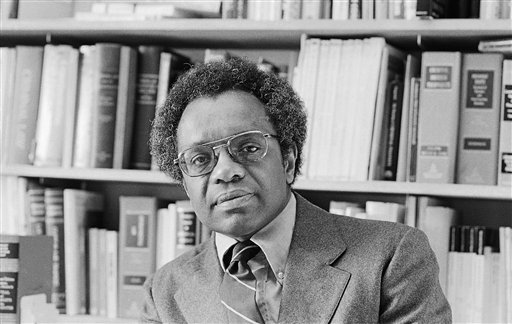Critical race theory is a movement that challenges the ability of conventional legal strategies to deliver social and economic justice and specifically calls for legal approaches that take into consideration race as a nexus of American life.
The movement champions many of the same concerns as the Civil Rights Movement but places those concerns within a broader economic and historical context. It often elevates the equality principles of the 14th Amendment above the liberty principles of the First Amendment.
Since 2019, the discourse around critical race theory and its intersection with hate speech regulation has become increasingly polarized and contentious. The debate over the theory has intensified, particularly in politically conservative parts of the United States, where it has sparked a series of legislative actions at the state level aimed at banning or restricting its teaching and discussion, especially in educational settings. This movement against critical race theory is often justified as a defense against divisive, anti-American or even racist ideologies being promoted under the guise of academic inquiry and free speech.
Critical race theory developed after civil rights advances slowed
Critical race theory, or "CRT" as it is sometimes called, has its underpinnings in the philosophical writings of Derrick Bell in the 1970s and early 1980s. It was born out of the realization by legal scholars, lawyers and activists that many of the advances of the civil rights era had stopped and in some circumstances were being reversed.
Early on, legal scholars, including Bell, Alan Freemen, and Richard Delgado, began developing alternative legal theories and frameworks for combating racial inequality. Their approaches combined various other theoretical positions, among them critical legal studies, critical theory, feminist theory, postmodernism, and cultural studies.
Some of the basic tenets of critical race theory rest on beliefs that:
- racism is a fundamental part of American society, not simply an aberration that can be easily corrected by law;
- any given culture constructs its own social reality in its own self-interest, and in the United States this means that minorities’ interests are subservient to the system’s self-interest; and
- the current system, built by and for white elites, will tolerate and encourage racial progress for minorities only if this promotes the majority’s self-interest.
In 1989, critical race theory became a unified movement at the first annual Workshop on Critical Race Theory. Other notable scholars from the original movement include Kimberle Crenshaw, Angela Harris, Charles Lawrence, Mari Matsuda, and Patricia Williams. Today, CRT has expanded beyond its legal studies foundations into the fields of education, political science, American studies, and ethnic studies. It also has produced several offshoots, including critical white studies, Latino critical race studies, Asian American critical race studies, American Indian critical race studies, and critical queer studies.
CRT scholars argue hate speech targeting oppressed groups should not be protected
Critical race theory scholars have critiqued many of the assumptions that they believe constitute the ideology of the First Amendment.
For example, instead of helping to achieve healthy and robust debate, the First Amendment actually serves to preserve the inequities of the status quo. They argue there can be no such thing as an objective or content neutral interpretation in law in general or of the First Amendment in particular. They also say some speech should be viewed in terms of the harm it causes, rather than all speech being valued on the basis of it being speech; and there is no “equality” in “freedom” of speech.

Hate speech is often considered protected by the First Amendment. But CRT scholars have critiqued this protection and the ideology driving it. Early on, these scholars focused primarily on the question of hate speech codes on college campuses and later laws and court opinions concerning the broader societal regulation of hate speech. In this photo, protestors shout down White Nationalist Richard Spencer during a speech Thursday, Oct. 19, 2017, at the University of Florida in Gainesville, Fla. (AP Photo/Chris O’Meara)
In terms of the First Amendment, the primary battlefield for critical race theory has been hate speech regulation. No one legal definition exists for hate speech, but it generally refers to abusive language specifically attacking a person or persons based on their race, color, religion, ethnic group, gender, or sexual orientation.
Hate speech is often considered protected by the First Amendment. CRT scholars have critiqued this protection and the ideology driving it. Early on, these scholars focused primarily on the question of hate speech codes on college campuses and later moved on to review laws and court opinions concerning the broader societal regulation of hate speech.
In general, these scholars argue that there is no societal value in protecting speech that targets already oppressed groups. They also question the logic of using the First Amendment to protect speech that not only has no social value, but also is socially and psychologically damaging to minority groups.
Perhaps the most well known and certainly the most prolific critical race theory scholar on hate speech is Richard Delgado, a founding member of the CRT movement who began publishing on hate speech in the early 1980s. On CRT’s connection to the First Amendment, Delgado states:
“Until now, the following argument has been determinative: the First Amendment condemns that; therefore it is wrong. We are raising the possibility that the correct argument may sometimes be: the First Amendment condemns that, therefore the First Amendment (or the way we understand it) is wrong” (Delgado 1994: 173).
He questions the old axiom that the answer to disfavored speech is more speech (counterspeech), noting that power relationships might make it difficult or impossible for members of socially disempowered groups to respond to certain types of speech.
CRT advocates have suggested laws that punish hate speech

In R.A.V. v. St. Paul (1992), the Supreme Court struck down a city ordinance that made it a crime to place a burning cross or swastika anywhere “in an attempt to arouse anger or alarm on the basis of race, color, creed, or religion.” In this photo, white robed members of the Indiana Ku Klux Klan watch a Kerosene soaked wood cross being raised in place at a Klan rally in Mansfield, Indiana, Saturday, July 27, 1985. The cross was burned after speeches by several Klan officials from other states. (AP Photo/S. Rossman)
Following the Supreme Court’s ruling in R.A.V. v. St. Paul (1992), which seemingly closed the door on hate speech regulation, Delgado continued to publish extensively on the legality and necessity of hate speech regulation. Relying heavily on social scientific data, Delgado outlined the harm caused by racist speech and developed a tort action for racial insults that he believes could pass First Amendment scrutiny.
Mari Matsuda and Charles Lawrence are two more early CRT proponents of hate speech regulation. Matsuda suggested the creation of a legal doctrine to limit hate speech in cases where the message is one of racial inferiority, the message is directed against a historically oppressed group, and the message is persecutorial, hateful, and degrading.
Lawrence contends that the way in which scholars and jurists enter the hate speech debate “makes heroes out of bigots and fans the flames of racial violence” (Lawrence 1990: 438). According to him, hate speech violates the Fourteenth Amendment. He has pushed for the establishment of hate speech regulations that will further enhance the role of the First Amendment in society, while still adhering to the principles of the 14th Amendment.
Critical race theory has become flashpoint in American culture
The debate over critical race theory and hate speech regulation since 2019 highlights a deeply polarized landscape where issues of race, identity and free speech intersect. While some view critical race theory as a necessary tool for examining and addressing systemic inequalities, others see its teachings as divisive and harmful. The conservative right’s legislative efforts to ban or restrict teaching of conservative race theory, coupled with legal challenges to these efforts, underscore the complex and contentious nature of navigating issues of race, education and free speech in contemporary society.
Proponents of the theory, including an academic cluster of UCLA School of Law faculty, see CRT as a useful tool for understanding American legal history. Its critics view it as a subversive method for turning young people against their country.
Critical race theory has gone from arcane legal concept to potent political rallying cry, as furor over the subject has sown chaotic protests at local school board meetings and prompted Republican lawmakers to introduce bills banning it and other “divisive concepts” in public schools.
To their proponents these bills represent a legitimate effort by parents to use the democratic process to shape education. But the measures have been assailed by Democrats as a threat to liberal education and to the teaching of even some of the most basic facts about American history.
The term critical race theory began gaining traction in the mainstream after The New York Times published in August 2019 the 1619 Project, a compilation of essays, commentaries and poems that brought the idea of critical race theory out of academia for the first time by asking readers to center the consequences of slavery and the contributions of Black Americans in the country's national narrative.
More light was shined on the topic after the May 2020 police killing of George Floyd added fuel to the Black Lives Matter movement and prompted new conversations about structural racism in the United States.
While the 1619 Project was praised, it also angered many who argued that it put ideology before historical accuracy. A few academic scholars challenged some of the project’s guiding principles, including that colonists fought the Revolutionary War to preserve slavery and that slavery was a uniquely American enterprise.
Political conservatives, especially then-President Donald Trump, took offense at its portrayal of America's origins and its shortcomings, saying that it undercut patriotism and promoted division.
"Critical race theory, the 1619 Project and the crusade against American history is toxic propaganda, ideological poison, that, if not removed, will dissolve the civic bonds that tie us together, will destroy our country," Trump said at the time.
Trump issued an executive order on Sept. 22, 2020, that challenged critical race theory and sounded an alarm about its impact. The order purported to “combat offensive and anti-American race and sex stereotyping and scapegoating.” It warned that some beliefs about racial and sexual identity were a “malign ideology … now migrating from the fringes of American society and [threatening] to infect core institutions of our country.”
A group of conservative lawmakers and their media allies followed the president’s lead. Although critical race theory had been discussed and taught for decades, it received little notice until the president issued his order. According to Media Matters, the Fox News network mentioned “critical race theory” three times in June 2020; a year later, in June of 2021, the phrase appeared on its broadcasts 901 times.
Trump’s critical race theory order spawns conservative legislation
More than a year after Trump’s order, the free expression group PEN America issued a report in November 2021 emphasizing that anti-CRT legislation poses a threat to the free speech guaranteed in the First Amendment.
According to PEN, legislatures in 24 states introduced 54 separate bills aimed at restricting teaching and training in K-12 schools, higher education and state agencies and institutions, by banning “prohibited” or “divisive” concepts, mostly relating to race, racism, gender and American history.
PEN reported that nine bills specifically targeted critical race theory. Eleven bills explicitly banned lessons based on the 1619 Project. So far, by PEN’s count, 11 bills became law in nine states. Another 18 were pending from the 2021 legislative sessions, and six more had been drafted for consideration for 2022.
PEN argued in its report that many of the bills are written so vaguely that they may chill a broad range of speech, especially among classroom teachers and school administrators who will err on the side of caution.
The American Civil Liberties Union (ACLU) challenged some of these anti-CRT laws, arguing that they violate free speech rights. For instance, in Oklahoma, a lawsuit filed by the ACLU contends that the state's anti-CRT law is unconstitutional as it infringes on educators' First Amendment rights. This raises significant questions about the balance between regulating hate speech and protecting academic freedom and free speech, especially within educational contexts.
The political nature of the situation was underscored in early 2021, when newly elected President Joe Biden canceled Trump's anti-critical race theory orders on his first day in office.
Biden’s executive order, “Advancing Racial Equity and Support for Underserved Communities Through the Federal Government,” rescinded diversity training restrictions and required all agencies to prioritize and create opportunities for communities that have been historically underserved. Biden’s Education Department also published in its federal register a new proposal to prioritize federal grants for history proposals that incorporate diverse perspectives.
Scholars, pundits from both sides spar over CRT
The Brookings Institution, UCLA legal scholars and other writers have studied why CRT has become such a flashpoint in the culture. They say it is important to understand what it is and what it is not. Opponents fear that CRT admonishes all white people for being oppressors while classifying all Black people as hopelessly oppressed victims. These fears have spurred school boards and state legislatures to ban teachings about racism in classrooms. However, these narratives about CRT often are exaggerations of the theoretical framework.
Scholars and activists who discuss CRT say they do not attribute racism to white people as individuals or even as groups. Rather, critical race theory contends that U.S. social institutions (the criminal justice system, education system, labor market, housing market, and health care system) are laced with racism embedded in laws, regulations, rules and procedures that lead to differential outcomes by race. These sociologists and scholars assert that many Americans are not able to separate their individual identity as an American from the social institutions that govern them. Consequently, they interpret calling social institutions racist as calling them racist personally. These scholars say they are not arguing that white people living now are to blame for what people did in the past. They are saying that white people living now have a moral responsibility to do something about how racism still impacts all of our lives today.
On the other side of the divide, a long report by the Heritage Foundation offers perhaps the right wing’s most explicit manifesto against critical race theory.
Here is the report’s summary:
“Critical Race Theory makes race the prism through which its proponents analyze all aspects of American life — and do so with a degree of persistence that has helped CRT impact all of American life. CRT underpins identity politics, an ongoing effort to reimagine the United States as a nation riven by groups, each with specific claims on victimization. In entertainment, as well as the education and workforce sectors of society, CRT is well-established, driving decision-making according to skin color—not individual value and talent. As Critical Theory ideas become more familiar to the viewing public in everyday life, CRT’s intolerance becomes “normalized,” along with the idea of systemic racism for Americans, weakening public and private bonds that create trust and allow for civic engagement.”
This article by Chris Demaske was originally published in 2009 and updated in 2024 by journalist Richard V. Stevens. Demaske is an associate professor of communication at the University of Washington Tacoma.

